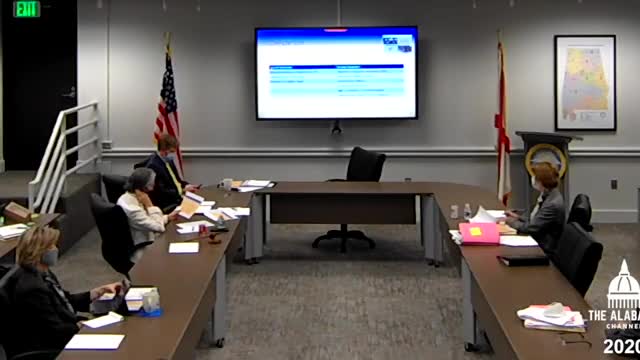Board reviews proposed rubric and timeline for math textbook adoption; committee seeks more granular guidance for districts
October 15, 2025 | Alabama State Department of Education, State Agencies, Executive, Alabama
This article was created by AI summarizing key points discussed. AI makes mistakes, so for full details and context, please refer to the video of the full meeting. Please report any errors so we can fix them. Report an error »

At the board work session staff and members of the statewide textbook review committee presented an updated approach to reviewing math instructional materials and a proposed timeline for districts to complete local adoptions ahead of the 2021–22 school year.
Review instrument changes: Committee members and department staff said they expanded the review beyond the two previously used measures (alignment to the Alabama course of study and to math practice standards) to include: (1) whether a resource is standalone (core) or supplemental; (2) the rigor and usability of the written material; and (3) coherence and usability of digital materials. Staff said a robust comment field for each title will explain strengths and weaknesses so local education agencies can choose the resource that best fits local needs and capacity.
Timeline and adoption steps: The committee described a timeline that would finalize committee recommendations in December, present a proposed list to the board in January, and allow districts to complete local adoption and purchases by April 2021 so materials could be available for summer curriculum work. Staff warned that if the committee removes titles from the published list, state administrative procedures require a 30‑day posting period, which could shift formal adoption timelines and might require an additional board meeting to satisfy notice requirements.
High school course complexity: Committee members noted particular challenges at the high‑school level where several newly revised courses have limited or incomplete submissions; for some new high‑school courses publishers submitted few or no resources that fully covered updated standards. The committee said it is reluctant to remove scarce options entirely because some districts would otherwise have no published resource to start from, and recommended that comments clearly identify gaps and indicate whether a title should be considered supplemental for a given course.
Why it matters: Textbook choices influence classroom materials, professional development needs and the degree to which districts must supplement vendor materials. Board members emphasized they want high‑quality materials and clear, detailed guidance to help districts that lack subject‑matter experts.
Ending: Staff said they will refine the rubric and the comment format, provide the committee's full scoring and comments to districts before publisher in‑service demonstrations, and return to the board with a final recommendation during the board's January meeting.
Review instrument changes: Committee members and department staff said they expanded the review beyond the two previously used measures (alignment to the Alabama course of study and to math practice standards) to include: (1) whether a resource is standalone (core) or supplemental; (2) the rigor and usability of the written material; and (3) coherence and usability of digital materials. Staff said a robust comment field for each title will explain strengths and weaknesses so local education agencies can choose the resource that best fits local needs and capacity.
Timeline and adoption steps: The committee described a timeline that would finalize committee recommendations in December, present a proposed list to the board in January, and allow districts to complete local adoption and purchases by April 2021 so materials could be available for summer curriculum work. Staff warned that if the committee removes titles from the published list, state administrative procedures require a 30‑day posting period, which could shift formal adoption timelines and might require an additional board meeting to satisfy notice requirements.
High school course complexity: Committee members noted particular challenges at the high‑school level where several newly revised courses have limited or incomplete submissions; for some new high‑school courses publishers submitted few or no resources that fully covered updated standards. The committee said it is reluctant to remove scarce options entirely because some districts would otherwise have no published resource to start from, and recommended that comments clearly identify gaps and indicate whether a title should be considered supplemental for a given course.
Why it matters: Textbook choices influence classroom materials, professional development needs and the degree to which districts must supplement vendor materials. Board members emphasized they want high‑quality materials and clear, detailed guidance to help districts that lack subject‑matter experts.
Ending: Staff said they will refine the rubric and the comment format, provide the committee's full scoring and comments to districts before publisher in‑service demonstrations, and return to the board with a final recommendation during the board's January meeting.
View full meeting
This article is based on a recent meeting—watch the full video and explore the complete transcript for deeper insights into the discussion.
View full meeting
